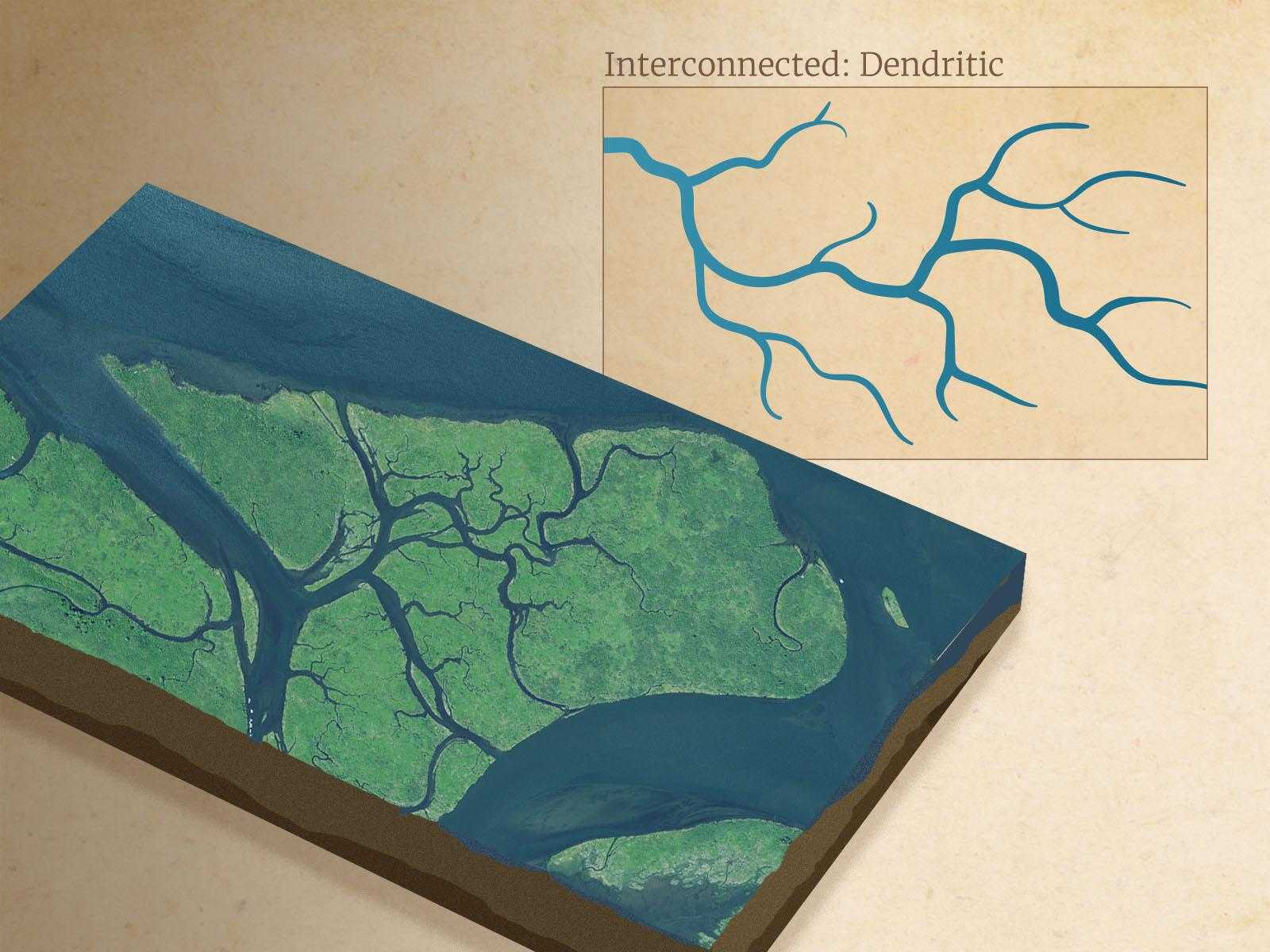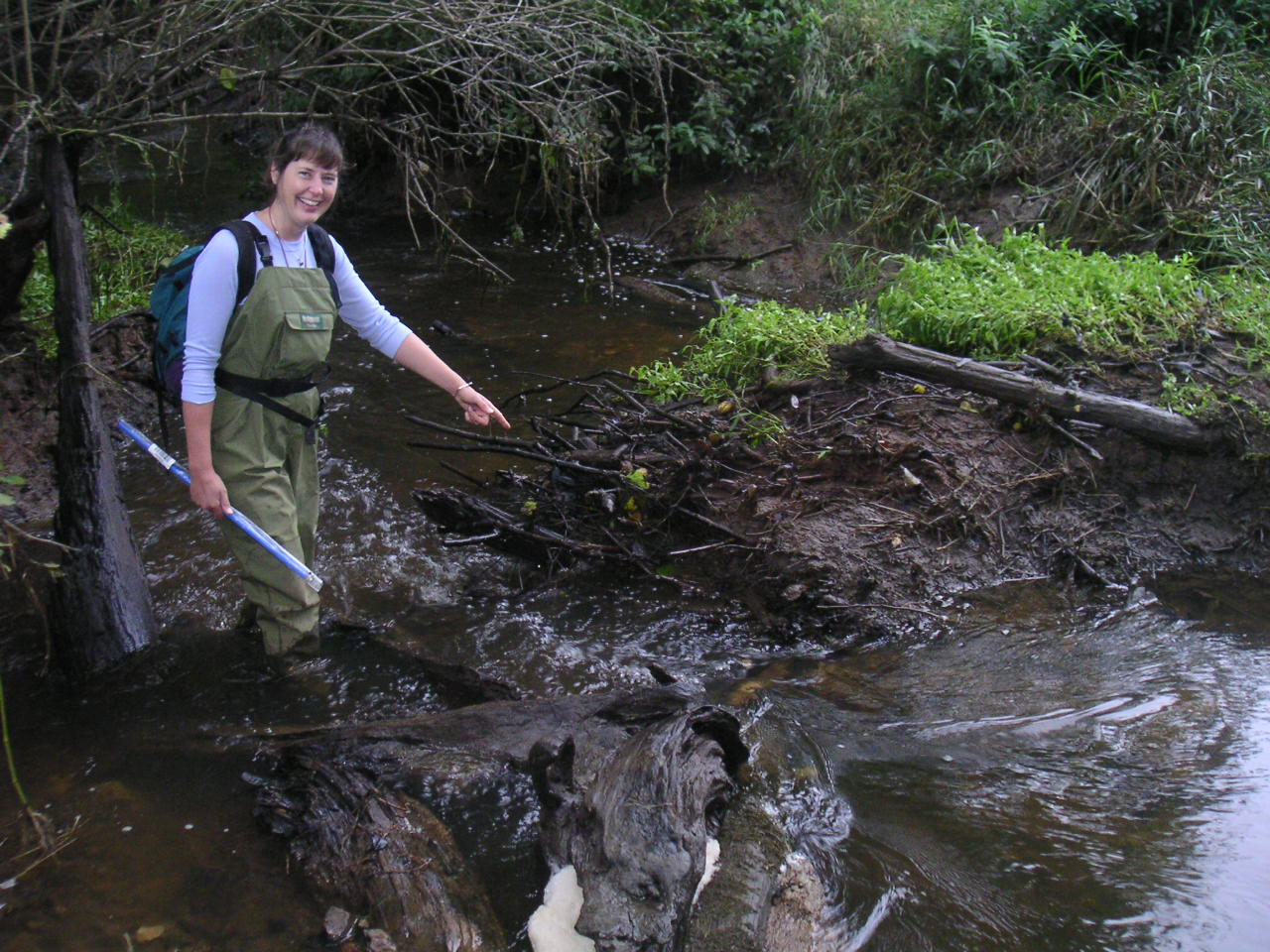Floodplain Wetland Channel Morphology and Sediment Characteristics Along an Estuarine to Tidal River Gradient

This study developed a new wetland classification for the Lower Columbia River that will serve as a basis for future wetland restoration design and engineering. A better understanding of the tradeoffs between channel types (one single channel vs multiple, complex channels) will help engineers design more effective restoration projects that could include aspects such as, better flood control or maximizing benefits to fish and wildlife.
(Graphic by Nathan Johnson | Pacific Northwest National Laboratory)
Like a rogue firehose spouting water, river channels meander from side to side over time, changing shape and size repeatedly throughout geologic millennia. These patterns drive the wetlands along channel bounds and the lower Columbia River is no exception.

In the context of ecosystem-based management, it is challenging for researchers and engineers to decide what a “normal” wetland channel network looks like. This is compounded by other factors such as dikes, dredging, and sea level rise. Furthermore, considerable knowledge gaps about Earth surface processes in wetlands remain on tidal rivers, the ecosystems located upriver of the coastal zone that are taking center stage with sea level rise. Shoreline infrastructure and stakeholder concerns factor into decisions about how wetlands are restored. Duplicating historical channel networks is not always a feasible or sustainable solution, so to weigh tradeoffs, researchers use models to predict potential restoration outcomes.
Wetland classifications are another way to help evaluate wetlands at large spatial scales. However, tidal rivers have overlapping coastal and riverine hydrology, geomorphology (topography formed by Earth surface processes), and ecology that is just beginning to be described. The study looked across sediment-process and channel parameters and asked several questions, including: Do current channel classifications capture the types of wetland channels and regimes found on tidal river floodplains like the Columbia? How do elevation and flood dynamics affect wetland soil types and the accumulation of sediment on the floodplain? And, can coastal engineering models of channels—both cross section and planform (as seen from an airplane)—be developed to accurately describe tidally influenced wetlands on river floodplains?
The research team, led by PNNL’s Heida Diefenderfer, found that principles derived from coastal wetlands to describe wetland channel cross-sections were applicable to the Columbia River estuary, but not the tidal river. Similarly, models of wetland area predicted channel perimeter in estuarine reaches up to the tidal river. The researchers introduced a metric to relate sedimentary processes to dynamic patterns of water surface elevation and identified elevation-related variation in soil organic carbon on the floodplain. For future ecological restoration, they suggest a natural network paradigm based on historical wetlands and river regimes, that accounts for modern hydrology and sedimentation.
Why it matters
With river regulation and climate change, there is increasing need to preserve and restore natural processes associated with the benefits of floodplains. Channel networks play a major role in shaping functions of these areas such as biodiversity and flood control. Tidal river floodplains are not well described. This new classification will serve as a basis for future restoration engineering and study designs. For example, does a single meandering channel control floodwater as effectively as a complex channel, or support more or less fish and wildlife? In the course of wetland restoration, it is challenging to design channel networks to enhance such benefits. This study found that farther from the coast, the local topographic setting and river hydrology are very important controls on channels, while closer to the coast channels conform more closely to tidal patterns.
What's next
Environmental engineers can use the models and classification from this study for ecosystem management and restoration. Research is under way to ascertain the reasons for variation of sedimentation rates throughout the floodplain, which will be important for managing the effects of sea level rise on flooding. The team is combining the findings with data about wetland vegetation and fish communities to assess how various types of stresses affect these ecosystems.
Sponsors: Bonneville Power Administration
Research Team: PNNL’s Heida Diefenderfer, Amy Borde, and Valerie Cullinan
Published: May 20, 2021
"Floodplain Wetland Channel Planform, Cross-Sectional Morphology, and Sediment Characteristics along an Estuarine to Tidal River Gradient,” published in the May 2021 edition of the Journal of Geophysical Research. DOI: 10.1029/2019JF005391